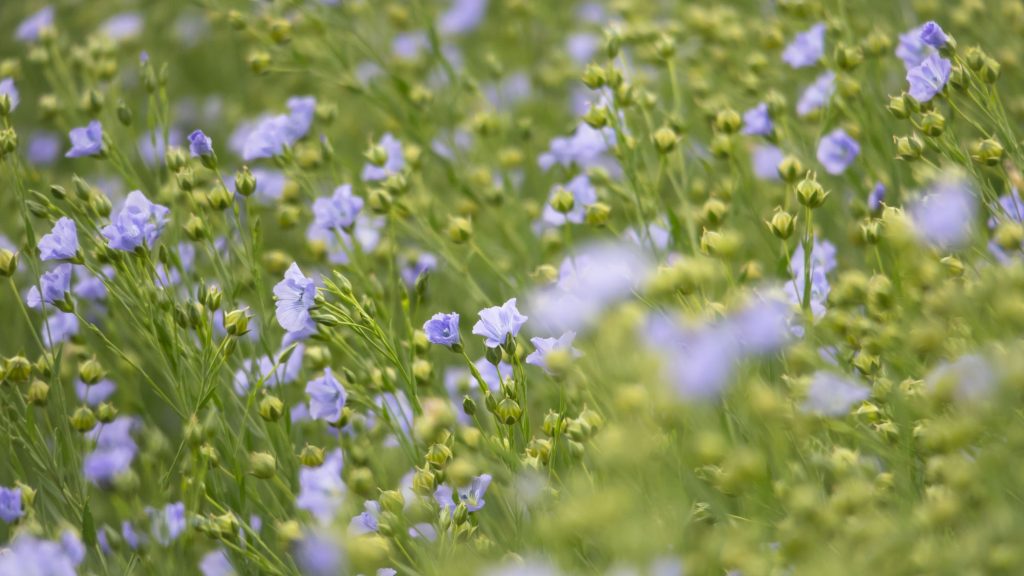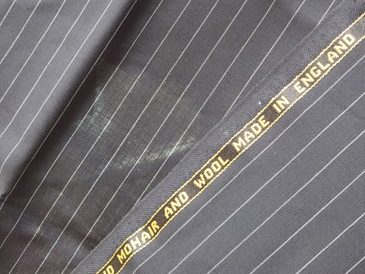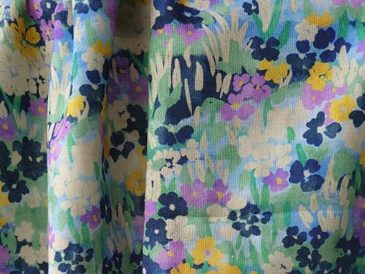[ad_1]
While we can all agree that food is a necessity, clothing is also pretty high on the list! Perhaps surprisingly, around 70% of the clothes we wear today are made from plastics such as polyester. However, more sustainable, ‘farmable’ fabrics do exist – such as linen, wool and hemp – that could offer a lucrative diversification opportunity for UK growers.

WWF research reveals that 46% of the UK’s carbon footprint comes from overseas emissions – which includes the majority of our low-cost clothing imported from countries like China, Bangladesh and Turkey.
Last month (March 2024) France’s parliament unanimously approved a bill imposing an environmental levy on low-cost fashion which would enable domestic production to compete with oversees alternatives. Given our goal of Net Zero, the potential implementation of a ‘carbon offshoring’ tax on imports seems imminent.
Hemp – a diversification opportunity for UK agriculture
Additionally, this week (9 April 2024), the UK introduced significant legislation changes in industrial hemp licensing to facilitate regulated cultivation of hemp. The change offers huge potential for UK arable farmers to pioneer a whole new crop, not only as a practical solution for sustainable fashion but also as a lucrative opportunity to sell hemp to the textile industries.
Could British agriculture take on the fabric industry and pave the way for an eco-friendly wardrobe?!
Becky Dodds, as well as being Director of Communities at Agri-TechE, is an avid hobby sewist, crocheter and even one-time denim shoemaker; so she knows more than most about the world of fabrics and textiles. This month she muses on ‘alternative’ clothing materials and how growing sustainable crops for fabric production could be a real game-changer for British agriculture.
The UK’s sustainable, ‘farmable’ fabrics
As consumer consciousness evolves, so does the demand for sustainable alternatives to plastic-based textiles. Retailers are increasingly embracing eco-friendly textiles such as ECOVERA viscose, deadstock fabrics (created from waste from fashion houses) and bamboo silks.
Linen, made from flax, and once a cornerstone of British textile production, has ceded ground to overseas cotton in recent years. Current UK linen-production is now restricted to artisan weavers, although some industry leaders – including resident Sewing Bee judge Patrick Grant – are on a mission to revive domestic linen production.
British wool is a compelling option with the few British woollen mills and spinners attracting a premium price (such as the well-known Harris Tweed). Lingering misconceptions about sustainability and ethics are being addressed by Woolmark.


The biggest alternative to wool is acrylic yarn which does not stand up to washing and releases microplastics in the process; bamboo and alpaca are better alternatives though are generally imported.
Leather alternatives are also on the rise – utilising everything from pineapple waste to grape skins, both of which took centre stage in Stella McCartney’s recent collection. However, many still need to be mixed with plastics in some form, and the processes of both tanning leather and creating leather alternatives is often energy and chemically intensive.
Dyeing and colouring clothes is another chemical-heavy process – with some concerns over toxicity, and issues with contaminated waste-water not being properly treated. A potential solution could be in the breeding of coloured cotton – for centuries grown globally in a range of hues, we now use water-intensive and chemicals to dye our only-white cotton.
This is but a tiny snapshot into just one market that agriculture could help service. Indeed, some of our community are doing just that – Ponda is using paludiculture to produce an alternative for polyester/feather stuffing using bullrush and Fibe is transforming potato waste to a cotton-alternative textile.
Opportunities in sustainable fabric production
Whilst some research suggests only 15% of people are making consistent sustainable fashion purchases, it’s pretty safe to say we are trending towards a socially conscious future, not only with what we eat, how we fuel our lives, but also what we choose to wear.
To meet this future demand, now is the time to identify and build these supply chains. Projects such as the Centre of High Carbon Capture Cropping will help growers diversify their rotations, improve their soils and water, and profit from growing for novel biomaterials. With a newly-released government strategy for materials and manufacturing in 2050, plus dedicated funding support (BBSRC is launching a call for feasibility studies into bio-based materials), opportunity is ripe to explore the future of farm crops for clothing.
Circling back to Patrick Grant… the Homegrown/Homespun project looks at how to rebuild the whole UK flax supply chain – from growing, to processing, weaving and even dyeing with UK-grown indigo.
Last year, Agri-TechE considered alternative crops at our event – sharing the work of NIAB and other institutes looking in part at the profitability of using novel crops in the rotation. But perhaps for some crops, the supply chain needs to be built in order to reap the reward of introducing these soil-improving crops to our rotations.
Fashion is just one potential new market for UK-grown crops – as the world looks to reduce its reliance on synthetic materials, there is no doubt that more opportunities are to be found for plant-based alternatives that deliver environmental and financial benefit to the farm.
For further learning on this topic, Articles of Interest podcast delves deep into the history of fabrics; I particularly recommend the Blue Jeans episode.
Source link


